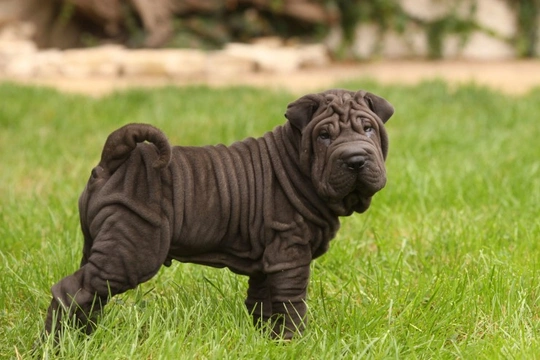
5 Interesting Facts About Dog Breeds with Loose Skin
Every dog breed has unique traits that distinguish it, with some breeds notably exhibiting loose or wrinkled skin that plays a significant role in their appearance and breed standards. This trait is particularly distinctive among certain dogs, often giving them the look of 'growing into their skin,' especially as puppies.
Loose skin is a hereditary trait considered desirable in specific breeds and is often defined within breed standards to maintain the breed's distinctive look. This article reveals five interesting facts about dog breeds with loose skin, highlighting care requirements, historical roles, and health considerations.
1. Loose Skin is a Key Trait in Several Popular Breeds
Some of the best-known dog breeds with loose skin include the Bloodhound puppies, Basset Hound puppies, Shar Pei puppies, and some English Bulldog puppies. Bloodhounds are especially notable for their loose skin around the face and neck that aids in their tracking ability by trapping scent particles closer to their nose. While Bulldogs have looser skin, breed standards discourage exaggeration of this trait to protect the dogs’ welfare.
2. Medical Conditions Can Cause Loose Skin in Other Breeds
While loose skin is hereditary in certain breeds, a medical condition called cutaneous asthenia can cause loose, sagging skin in breeds where this is not typical. This rare genetic disorder leads to a deficiency in collagen production, resulting in fragile, hyperextensible skin that fails to spring back into place. Affected puppies may be born with normal skin that gradually weakens, making it prone to tears and injuries. Responsible breeding practices discourage breeding dogs with this condition to prevent passing it on.
3. Loose Skin Has Historical Working Advantages
Historically, many loose-skinned breeds were working dogs. For scenthounds like Bloodhounds and Basset Hounds, their long ears and loose skin helped trap scent particles for enhanced tracking. In breeds used for bull baiting and dog fighting—now illegal sports—the loose, slack skin offered a protective advantage by providing a target for bites that prevented deeper injuries to muscles and organs. This trait often reduced the severity of wounds in confrontations.
4. Special Care is Essential for Dogs with Loose Skin
Dogs with loose, wrinkled skin often have short fur, which is relatively easy to groom; however, their skin requires diligent care. The folds can trap dirt, moisture, bacteria, and shed skin cells, which may lead to irritation or infections without regular cleaning. Owners should routinely inspect and gently clean their dog’s skin folds using gentle, pH-balanced products designed for sensitive skin. Specialized wipes and sprays, such as those made for Bulldogs and Shar Peis, can help maintain hygiene and comfort. Early detection of redness, swelling, or odor is important to prevent serious skin conditions.
5. Loose-Skinned Breeds Are Prone to Specific Skin Problems
Many loose-skinned breeds are predisposed to skin fold dermatitis and other conditions like allergies and sensitivities. Dermatitis in skin folds causes redness, itching, odor, and sometimes secondary bacterial or yeast infections. Conditions such as entropion—where eyelids roll inward—are also more common in breeds with extreme loose skin, particularly the Shar Pei. Managing these issues involves regular fold cleaning, vet-approved topical treatments, controlling allergies, and maintaining a healthy weight to reduce skin folds. Responsible breeding aims to minimise extreme wrinkles that cause welfare problems.
Summary
Loose skin is a defining and fascinating trait in several beloved UK dog breeds, offering unique advantages historically and distinct appearances today. However, it requires careful hygiene, attentive medical care, and responsible breeding to ensure these beautiful dogs remain healthy and comfortable. Understanding the hereditary nature of loose skin, recognising medical conditions like cutaneous asthenia, and following breed standards that promote welfare are all important for anyone considering or caring for these breeds in 2025.



